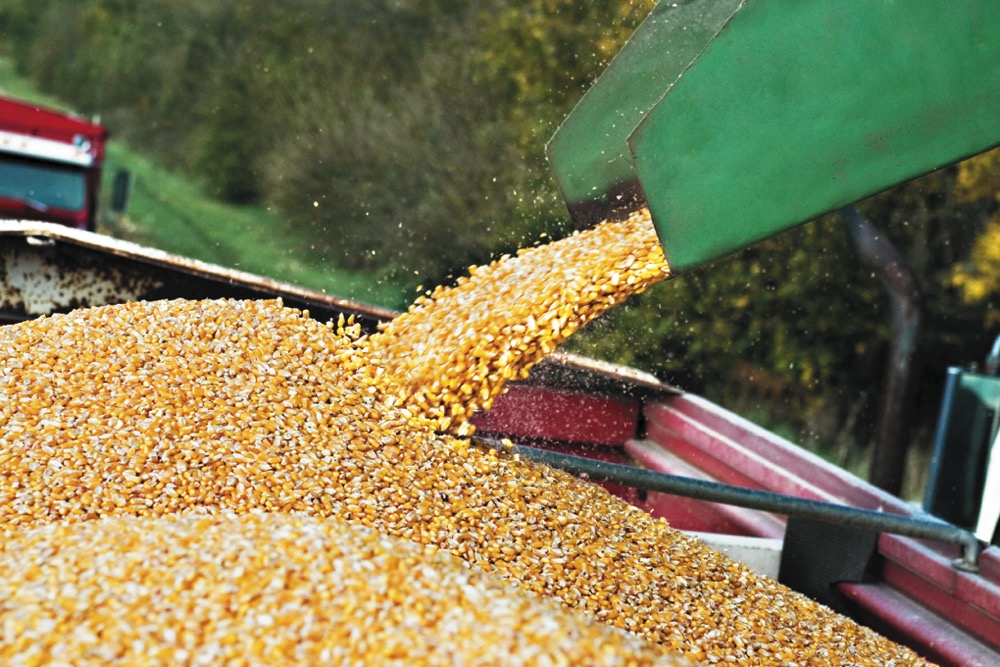A military phrase jumps immediately to mind. Veteran soldiers often say that no battle plan ever survives its first brush with the enemy.
On the farm, you might think it means that the time you’d put into laying out a marketing plan is time you could better spend on any of the thousand other things that need your attention.
You’d be wrong, says Calgary-based market analyst Errol Anderson. Below, we challenge him to explain why.
Country Guide: When we set up this interview, we suggested the topic “Getting your marketing plan down on paper.” You countered, saying we should make the focus “Getting it down on paper, and beyond.” Why?
Read Also

Producers aren’t panicking over tariffs and trade threats
The influence of tariff and trade uncertainity on farm business decisions.
Errol Anderson: Yes, it is really important you get it all down on paper at the end of the production season. You need to know how much grain you have of what grades and quality, and you need to revisit the cost-of-production estimates you did at the start of the season to find out what it actually cost you to produce that grain. You need to gather as much market intelligence from a variety of sources as you can, so you will know where the opportunities may arise as the marketing year goes on. This is all still very, very important.
But I do think it’s also very important to state that this is the beginning of the process, not the end of it.
Things are going to change throughout the year. New crop is going to come to market from other global production areas. New sales opportunities are going to emerge. As we saw last year, transportation issues can play a huge role in determining what opportunities are out there, and where. There are a lot of things that can and will change and evolve throughout the year, that’s my main point. As a grain marketer, you need to be aware of these things, stay in touch with how these things evolve, and modify your marketing plan as necessary. When you get right down to it, in many ways marketing grain is more of an art than a science.
For example, in the fall we saw a rally in soybeans and canola, and if we’re really honest, nobody saw it coming. It was a flow of outside investment money entering the ag commodity market.
CG: So let’s start with getting the plan down on paper, then we’ll work out from there. What does a successful marketing plan look like? What are the important things to keep in mind?
EA: Sticking to a plan is challenging, and not just because of the changing nature of grain markets or transportation bottlenecks. We’re also battling ourselves and keeping our emotions in check. Emotions all too frequently get in the way of making solid pricing decisions. I don’t want to harp on this too much, or sound like a broken record, because I know we’ve talked about this aspect a few times in the past — but it really is one of the core concepts you need to wrap your head around to be a better grain marketer. Emotions are deadly when it comes to making solid business decisions. To me, the success of a marketing plan is measured by a sense of business control. If you’ve got that, you’re a successful marketer.
To attain this, we need to disregard our egos and respect the market. Another concept you’ve heard me talk about a lot is how the market doesn’t care about your cost of production, and that it can and will price grain below it for long periods of time. Knowing your true cost of production and understanding the nature of markets mean that when you are presented with opportunities to price grain at a profit — and these always do appear, no matter how tough the market — you’ll understand what’s happening and you’ll be ready to act.
If you don’t have this knowledge, you can open yourself up to the risk of passing over opportunities to lock in profits while waiting for higher prices. Almost nobody prices grain at the top of the market, because those market peaks are so short and transitory. It’s better to scale in sales at various points throughout the climb up to that peak than risk missing them entirely, because markets move much more quickly when they’re headed down.
Essentially you have to ask yourself this question: “Am I a marketer, or am I a speculator?” This isn’t a new concept, and I’m certainly not the only market adviser to talk about it, but it is a really important point that every grain marketer needs to get a handle on.
- Part one of Country Guide’s interview with Errol Anderson: Making sense of ag markets
CG: So how do you structure a plan to make the most of your marketing decisions?
EA: A selling plan is, in my opinion, always led by farm finances. Here there are three important things to keep an eye on. Your level of debt must be respected, you have to be mindful of your bill payment schedule, and your cost of production must also be respected. These are the three key areas to judge the health of your operation and to base marketing decisions off of.
It really comes down to understanding and respecting your balance sheet and need for cash flow. From understanding these needs, you can start to draw up a delivery plan. I’m a big believer in understanding when and why you’ll need to start up the auger, fill the truck and head to town, as well as issues that you can predict that might limit your ability to do this.
You need to do this month by month. So in October, you might need to pay suppliers. November, you could have fuel payments. In December you may have land payments due. In January there could be land rent due. In March and April, there could be road restrictions that prevent you from delivering. In June you need to be paying for fertilizer and chemical. By summer you want to be emptying your storage for the next harvest. These are obviously just generic examples, and it’s going to vary from operation to operation, but you get the idea.
After you’ve mapped this out, the second important thing you’ve got to do is make a decision to price grain. It sounds simple, but of course it isn’t. There are a number of factors that go into this decision, and to make it, you need to see some signals. How do the market conditions fit into your pricing plans, and what are your overall marketing goals? Do you have a hedging program, either through your elevator or a broker? How should you be managing it, given market conditions?
I think it’s helpful to spread sales over four quarters, and manage them that way, as different periods of the year. Then ask yourself some pretty probing questions as you make these decisions.
CG: Can you run us through some of the questions you encourage growers to ask themselves?
EA: Sure. The most obvious and first question is: Should I sell now or wait? To make this decision you need a good handle on what the market outlook is. You need to stay connected with market research and get as much information as you can. In this day and age, the Internet is full of this information, but you also have to remember that the Internet can also frequently “be full of it.”
So what I’m really saying is you need information you can trust, from sources you can trust. You may find, in the end, it really boils down to just three or four sources that know what they’re talking about. These will be your central sources of information. Another important question to ask is: What sort of information is important? I personally think it’s very important to get help identifying where the buyers and sellers are in the larger market, where they’re located, and what they’re buying and selling, as much as you can, because this information is going to give you insight into where the marketing opportunities are going to lay for you, the farmer.
Then there’s the question: Should I sell into the cash or the futures market? Here, the basis is central to the decision. So for example, if the basis is weakening and futures are rising, it might be time to lock in the futures in your contract with your local elevator. Or if you’re using a broker, it could be a very good time to purchase some put options, scaling them in so that you have the opportunity to capture the rising futures market. I like using put and calls, rather than the straight futures market, because they don’t have margin calls, which can be pretty tough to take. I think using them helps maintain focus and discipline, and prevents distraction and emotion from creeping in. Again, I won’t harp on the emotional aspect, but I will highlight how important it is to insulate yourself from them so you can make sound business decisions.
CG: Let’s talk a bit about managing cash flow. We touched on it earlier when you talked about figuring out when you were going to need money to meet your obligations. How can a farmer step off that treadmill? Or is it possible?
EA: I think you can be creative in your pricing and delivery plan using the marketing tools you have at your disposal.
Let’s say you have bills to pay right after harvest. A lot of other farmers are going to be in the same boat. Combine that with the reality of a new North American crop having just come off, and typically we don’t see a great environment for locking in profitability, and a lot of farmers deliver at a loss, seeking cash flow to pay bills.
Now I’m not saying, don’t deliver. Sometimes it really does make sense to deliver then to get the cash in hand. You can pay your bills and avoid financing penalties, for example. I suggest one strategy growers might want to consider is delivering early post-harvest, getting the cash for the grain, and then buying the paper on the market, probably in the form of call options.
A lot of people might not agree with me on this, but I really do think that, with the marketing tools farmers have at their disposal, they should reconsider how much grain they want to be storing on their farms. They’re always going to have to store some, especially any specialty crops that have been pre-sold under delivery contracts. But should they also be storing as much of the commodity crops as they do?
In my mind, stored grain is a liability, not an asset. Certainly it has value, but it also has a lot of risk attached to it. There’s a lot of room for things to go wrong, and a lot of hassles delivering through the long, cold winters. I just think it’s simpler and less risky to manage paper than stocks. This can obviously also help farmers better manage bin space, which is always at a premium.
Another benefit of having some paper might not be obvious, but I’ve heard this from a number of farmers that I’ve worked with over the years. They say having a position in the market makes them more interested in the market, and makes them pay more attention to it. I suppose it’s like the casual hockey fan who signs up for a hockey pool — suddenly those results have a personal impact, so they’re following the games much more closely.
CG: What are some of the other pricing issues and risks growers need to be aware of when planning?
EA: We’ve already covered a lot of them, but one thing we haven’t talked about yet is production contracts that you’re pricing in the production year. Here, the balance farmers need to strike, of course, is between pricing risk and production risk. Often these contracts present attractive opportunities to lock in profits during the production season, but the trade-off is the crop isn’t in the bin yet, and since Mother Nature always bats last, you don’t know for sure you’re going to get it into the bin.
Most growers price some, but not too much. How much is a question of the individual farm and that farm manager’s level of risk tolerance, and the balance sheet’s ability to withstand a setback, like having to buy out a contract the farm can’t fill. I think for most farmers that lays somewhere around a third of their potential crop, though some growers will go up to as much as half. I think most, when they get up to around 35 per cent, they start thinking “that’s enough.” There isn’t really a hard and fast answer about what’s the “right” balance. It’s risk tolerance and respecting your financial position.
CG: The elephant in the room this marketing year is how the markets have changed. We’re no longer running with the bulls, we’re wrestling bears. Any tips on how to do this?
EA: Yes, they’ve certainly changed, that’s undeniable. I think the best analogy might be football. We went through a few years where the defence on the other side had fallen apart, and it was relatively easy to throw a touchdown pass. But now that’s changed and we’re fighting for every inch we can get. That doesn’t mean you can’t score, you can still find the end zone and put points on the board — but it’s going to be a lot more work.
We’ve already covered a lot of it. Know your true cost of production, have a plan, set up a trading account or work with your local grain buyer to use the marketing tools available to you. Know the market as well as you can, using trusted sources, and respect what you’ve learned. Don’t pass up opportunities to lock in profitability today because you’re hoping for a return of the high prices of the past few years, because I’m afraid it might be a long wait.
Work with your local buyers and make sure they have a good idea of the quantity and grades that you have on hand. Frequently the best opportunities for profit are going to be very short term and transitory — a local elevator agent who needs a few truckloads very quickly. If they know you have that grain, you’re going to be the farmer that gets that call and has that opportunity.
This is going to be a period of time where marketing discipline is very important. If you can be disciplined and approach your selling, pricing and deliveries systematically, you will get better results over time.
This interview was originally published as ‘Best laid plans’ in the January 2015 issue of Country Guide
















